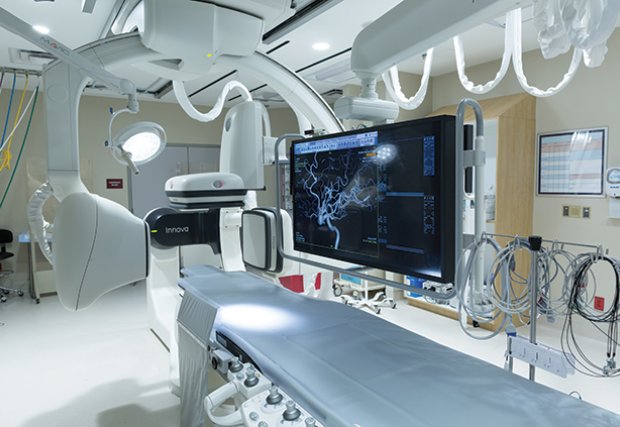Time Is of the Essence with Stroke, Aneurysm or Brain Bleeds
South Texas Health System McAllen’s updated technology and advanced treatment options make it possible for neurologists to provide critical care to patients 24/7 for complex disorders affecting the brain, neck and spine.
Since the neurointerventional suite opened earlier this year, there have been more than 180 procedures performed, says System Stroke Program Coordinator Shenna Gonzales, RN, BSN. “Many of those procedures involved clot removal, aneurysm repair, or other neurological treatment,” she says. “We are helping to make a difference in the lives of many, and patients don’t have to travel outside the area. They can be diagnosed and treated right here.” She also adds that the physicians are specially trained in stroke and neurocritical care, which enables them to provide a higher level of care for patients.
A Matter of Minutes
The sooner a neurological issue is addressed, the better the chance the patient has for a good neurological recovery. For patients suffering from a possible stroke, there is usually a six-hour window to address it, but recent stroke guidelines have allowed the extension of treatment from six hours to up to 24 hours from onset of symptoms in qualified stroke patients. “If you believe you or someone is having a stroke, you should call 911 immediately and get to the closest emergency room,” says Endovascular Neurologist Ameer E. Hassan, DO.
The new biplane catheterization lab cameras allow doctors to quickly see the blood vessels in the head and neck in 3-D, identify the problem and correct it. Endovascular Neurologist Alexandros Georgiadis, MD, says that another plus is that the procedures are minimally invasive. “For the patient, that can mean less risk of infection, less bleeding and less pain after,” he says.
Patients can be referred for testing of a possible aneurysm or blockage in the carotid arteries and if something of an urgent nature is found, it can be treated at the same time. Along with stroke and aneurysm, doctors can also place stents and repair brain and spinal artery and venous malformations. For those who come into the ER with a possible stroke, clot-busting medication can be administered in the suite while checking to see if there are any large clots that need to be retrieved. “If you know someone who is permanently disabled from stroke, then you must know how critical it is to get the right help and get it fast,” says Endovascular Neurologist Wondwossen Tekle, MD.
Do You Know the Symptoms of a Possible STROKE?
Recognizing the symptoms can help save your life or someone else’s life. Just B.E. F.A.S.T.
BALANCE: Does the person have a sudden loss of balance or coordination?
EYES: Has the person lost vision in one or both eyes or have they had sudden double vision?
FACE: Ask the person to smile. Does one side of the face droop?
ARMS: Ask the person to raise both arms. Does one arm drift downward?
SPEECH: Ask the person to repeat a simple phrase. Is it slurred or strange?
TIME: Is critical! If you see any of these signs, call 9-1-1 immediately.
Don't wait to get help - call 9-1-1 immediately.
First responders are trained to stabilize and treat the patient upon arrival. The sooner you get help, the better your chances for a good outcome.

